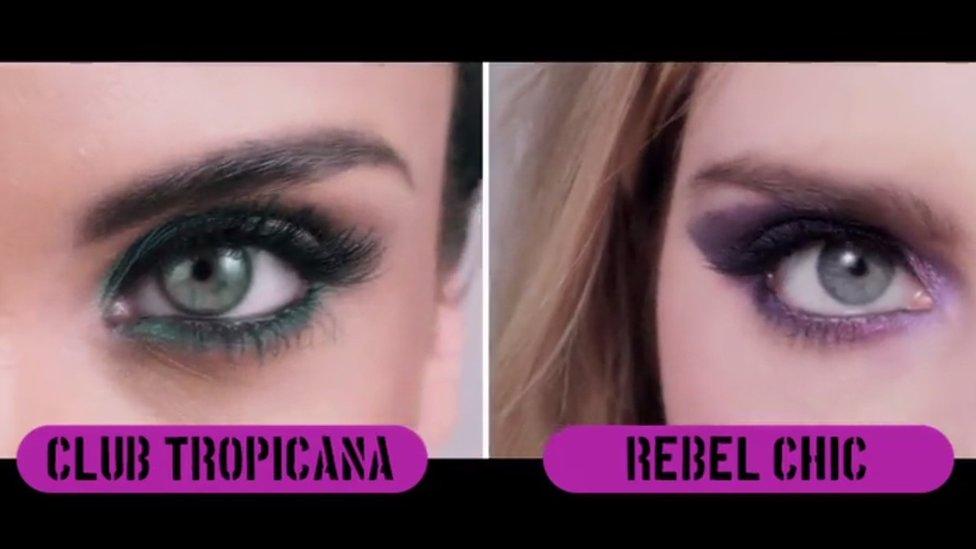Show, don't tell: How video is swamping the internet
- Published

Virtual reality headsets could give video marketing a whole new dimension
Asked what inspired him to write the cult 1979 hit single Video Killed the Radio Star, songwriter Trevor Horn said it came from the idea that "video technology was on the verge of changing everything".
More than 35 years later, it's digital video - particularly on mobile - that is changing everything again.
Video will account for 80% of all internet traffic by 2019, up from 64% in 2014, says technology giant Cisco, external.
Facebook founder Mark Zuckerberg says that 90% of the social network's content will be video-based by 2018.
And network company Ericsson thinks, external mobile video traffic will rocket 55% a year between now and 2020.

Trevor Horn's 1979 hit Video Killed the Radio Star has proven prophetic
So how should businesses be responding to this new video world and what technologies are out there to help them?
'Visual by nature'
The business argument for using more video is simple: it works.
The Web Video Marketing Council, external (WVM) says online video has become a crucial part of the sales and marketing programmes for most business-to-business (b2b) organisations, with 96% of those surveyed saying they now engage in video content marketing. Nearly three-quarters report a positive impact on their marketing results.

Younger generations in particular see mobile video as their preferred form of content
Video marketing company Wyzowl says 64% of firms it surveyed, external thought adding video to their websites led directly to increased sales.
"Video is growing and will only get bigger because people are visual by nature," says Chip Arndt, executive vice president at Flimp Media, external, a video production company.
"Videos convey an enormous amount of information quickly, concisely, and in a fun way that is easily measurable."
Attention-grabbing
But what makes a good video?
In the era of BuzzFeed, YouTube, Facebook and Vine, video is clearly about entertainment for viewers with infamously short attention spans. If you can include footage of comic cats, so much the better.

In 2015 Samsung and Marvel's 7-minute marketing video was viewed more than 20 million times
One of the most popular marketing videos of 2015 was for Samsung's Galaxy S6 smartphone, external, released to coincide with Marvel's Avengers Assemble film.
Combining two global brands with story-driven action content, high production values, and brand ambassadors such as footballing genius Lionel Messi, the video garnered more than 20 million viewers.
Of course, not all businesses have the budgets to match Samsung and Marvel, but there are plenty of video production companies out there that can help, from high-end firms like Disney-owned Maker Studios, external, to a raft of smaller independents offering bespoke and off-the-shelf services.

Marketing videos can be made more interesting using animation and graphics
And creating video has become a lot easier in the age of smartphones equipped with high-definition cameras.
Episend, external helps firms create personalised multimedia videos they can send to sales prospects by email. The software monitors how the recipients respond to the video, and gives the sender a good indication of whether it's worth following up with a phone call.

Rapt Media creates interactive videos for brands such as Maybelline New York
Videopath, external has developed a way of incorporating interactive elements throughout a video - markers that viewers can click on to receive additional relevant content. The company believes this helps keep viewers engaged.
And Rapt Media, external tries to make videos more interactive by allowing the viewer to choose which content they see, "turning viewers into active participants".
Platform battles
Once a marketing video is ready to go, where is the best place to publish it?
Services such as Vidyard, external and Brightcove, external will help you distribute your video via every device and every platform, then measure how it performs - which bits worked well, which didn't; who viewed it, who ignored it.

Google-owned YouTube may seem the obvious place to be seen, and there are plenty of companies - VideoCreators, external, for example - that will advise you how to do it.
But Facebook's suite of platforms - WhatsApp, Messenger and Instagram - now give it "a complete marketing ecosystem", says social media marketing expert Lasse Rouhiainen, providing access to nearly 3.8 billion users a month, with 100 million hours of video being watched every day.
"The combination of understanding user behaviour and an experience which is driven by 'thumb-scrolling discovery' has made Facebook the bellwether for the wider market," says Gareth Capon, chief executive at social video start-up, Grabyo, external.

HBO's Game of Thrones Season 6 YouTube trailer has been viewed more than 16 million times
That said, YouTube is still a massive player, says VideoCreators founder Tim Schmoyer. But many businesses aren't making the most of it, he believes.
"I've consulted with many business that are uploading lame content and wondering why it's not performing well," he says.
"Nothing, no matter how innovative, can make a poor online video strategy work well."

Lightweight high-definition digital cameras have made video making much easier
Facebook and YouTube have their own in-built tools that enable firms to see how long a viewer was engaged, at what point they stopped watching, whether they watched it more than once, and if they shared it or not.
And tools such as Ooyala, external's video content management system also provide real-time analytics, allowing you to target the right markets and syndicate your videos.
Virtual future?
Developments in data-driven marketing and virtual reality (VR) will be among the major game-changers in the coming year and beyond, some observers believe.
VR devices such as Google Cardboard, which can be bought for as little as $10 (£7), could be given away by companies to clients to view their videos. Samsung is bundling the Oculus Gear VR headset with its new Galaxy S7 smartphone.

Samsung has been bundling the Gear VR Oculus headset with its new Galaxy S7 smartphone
"Facebook is doing a big push to bring virtual reality videos to the mainstream," says Mr Rouhiainen.
"Mark Zuckerberg confirmed that there have already been one million hours of 360 video consumed in [Samsung's] Gear VR."
Ad blocking
But a big cloud on the video horizon is ad blocking.
"Ad blockers are causing huge concern for advertisers and publishers and media owners," says WVM's Sean Randles.
"We are already seeing evidence of tweaks being made by Google to allow video ads to work regardless of all ad-blocking extensions. Facebook and Twitter will have the same issues."
The advantage video has over other forms of advertising, however, is that it can be more entertaining and therefore more likely to be tolerated by consumers and business users alike.
Video will be victorious, it seems.

Follow Technology of Business editor @matthew_wall on Twitter, external.
